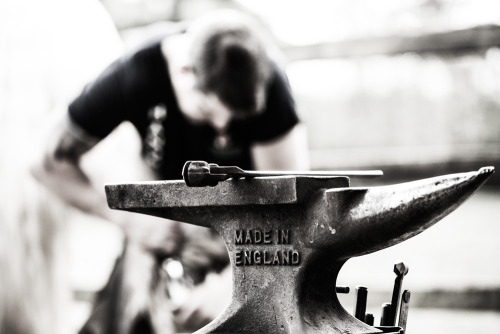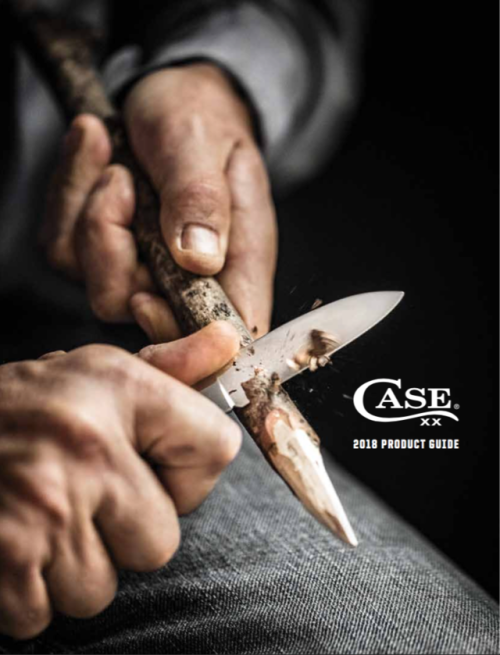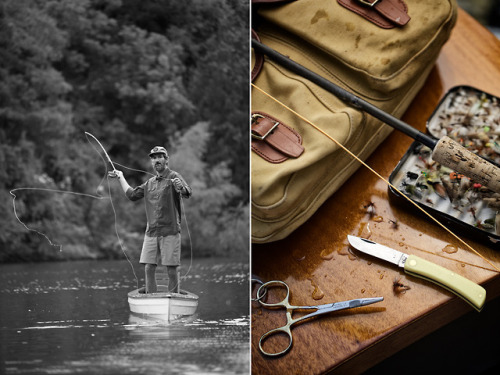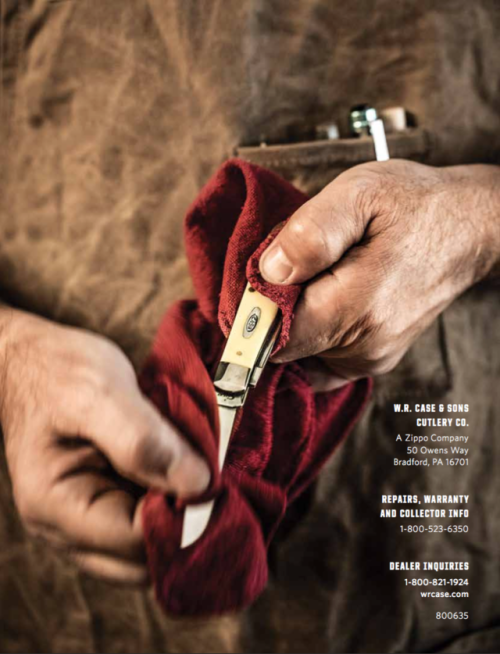#farrier
CASE KNIVES - 2018 CATALOGUE
When I turned six my dad gave me my first knife - a Case sheath knife with a stacked leather handle. I wore it everywhere for years, made forts and countless spears and arrows. After I read “The Hobbit” I wrote the name “Stinger” on the the top of the case with a blue ballpoint and imagined my own knife was like Bilbo’s magical dagger.
At around 12 I had the novel idea to wrap the handle in a long furry strip of squirrel hide from one of the skins I tacked to a piece of piece of plywood and dried on the roof of our garage. I still have the knife and it is now within arms length - mostly relegated to opening letters these days.
All this to say that my love of Case knives runs deep, so it was a particular honor to have the chance to work for them - something I could not have even imagined when I was a boy.
Thank you to my home-team agency McGarrah Jessee - to Brett Eaton, Avery Graham, Jillian Gamboa and creatives James Mikus, Jeff Ross, and Sam O’Brien for bringing me into the project and the great team effort. Thanks also to our real talent - master leatherworker Seth Stidham, of Stidham Outfitters (http://www.stidhamoutfitters.com), fly fisherman/adventurer JT VanZandt https://www.jtvanzandt.com/, organic farmer Brenton Johnson https://www.jbgorganic.com/ and farrier Will Mikus for sharing their time, stories and love for Case knives.
Post link

a year ago this jenny had four feet full of white line disease. i had to resect 50-75% of the wall on all four feet, by far one of the worst cases i have seen. we’re still beating back the occasional nasty spot, but wow would you look at her now!
HoofCareQ&A
okay y'all i’m gonna put a hoof care video out later this coming week in my free time. you can drop questions here by reblogging and/or replying. or you can shoot me a message. preferably nothing involving specific pictures since it will be hard to show the audience the pictures when answering but, ya know, whatever questions you have is fine. horses, donkeys, mules, goats, sheep, pigs, they’re all fair game. they can be more complex or very simple, doesn’t matter to me!



we do love a pony foot makeover


there is no reason for draft or mini feet to be out of control. extreme size is not an excuse for bad hoof care.


met a new little guy named Spirit who needed quite a bit of help in the hoof department
Got myself a toy. She’s a beauty ⚒️

i laughed so fucking hard at this

this fjord foot has issues but wall thickness is NOT one of them




little folks
went to pick up a back foot on a new-to-me horse today and he kicked the rasp off my stand and sent it flying almost all the way across the pasture. luckily no one was in its path.
this was the owner’s idea of “a little funny with one of his legs”

first appointment this morning was a doozy




dang i was working fast today (ft orion )
So I now own one of these electric hoof trimmers by Hoof Boss! It’s a mobile unit that runs off a dewalt 20V battery and has several different disc attachments. Later this week I’ll be practicing on wood, and then I will try it out on one of my personal horses
also cw for a loudish noise in the video when i turn on the device
transcript to come as well

Toe extension with a thick polyurethane pad and Vettec Adhere for Skipper, a donkey who has contracted flexor tendons in his front legs. The right one is the worst, he’s usually completely knuckled over and standing on his dorsal wall. The desired effect was immediate, and now we rub some time on it. Hopefully we won’t have to do the same with the other foot, as he wasn’t super thrilled about it all (thus the aesthetically lacking glue job ).


engulfed by mini donkeys, the perfect way to die

Happy Mule Appreciation Day. This one celebrated by kicking me in the neck while I was trying to help her out with those horrible feet

just making sure i did it right

This laminitic mare has her clogs on and is ready to dance her way into recovery
Laminitis season is already upon us (honestly, it’s been happening all year ). If you have a sugar sensitive horse, whether it’s from PPID/Cushings or EMS/IR, it’s time to pull them off the pasture, or at the very least put them in a grazing muzzle whenever they are out. Greenguard and Thinline are excellent lightweight grazing muzzle choices that come in a variety of sizes.
The greatest risk is going to be when the weather becomes milder or sometimes after sustained rainfall, like in this mare’s case. Temps above 60°F during the day but near or below 40°F at night are HIGH RISK times for laminitis, even in “normal” horses. Under those conditions, grass utilizes the sun to produce sugars for growth, but the cold night temperatures do not allow the plants to use the sugars effectively. Sugar levels continue to build if there are several of those days in a row, and even if the temperatures increase or decrease out of that zone, the sugar content can stay high for several days.
The warning signs of laminitis can be very subtle. As prey animals, equines often mask this pain until it is unbearable. Keep an eye out for slow/stiff turns, shortened strides on flat ground, constant shifting of weight on the front feet, increased digital pulse, and of course the classic “rocked back” founder stance.
If you suspect your horse has laminitis, take the following action immediately:
1. Call your vet
2. Call your farrier
3. Cold hose or ice the feet if they are warm
4. Pull the horse off of pasture entirely
5. Soak hay for 30 minutes and drain off excess water before feeding to reduce sugar content
The sooner you catch laminitis and begin to treat it, the better chance your horse will have a good recovery. Clogs like the ones below are a great way to help laterally stabilize the foot, offer support over the heels/bars/frog, and ease breakover to reduce stress on the laminae.

WEAR A MASK












